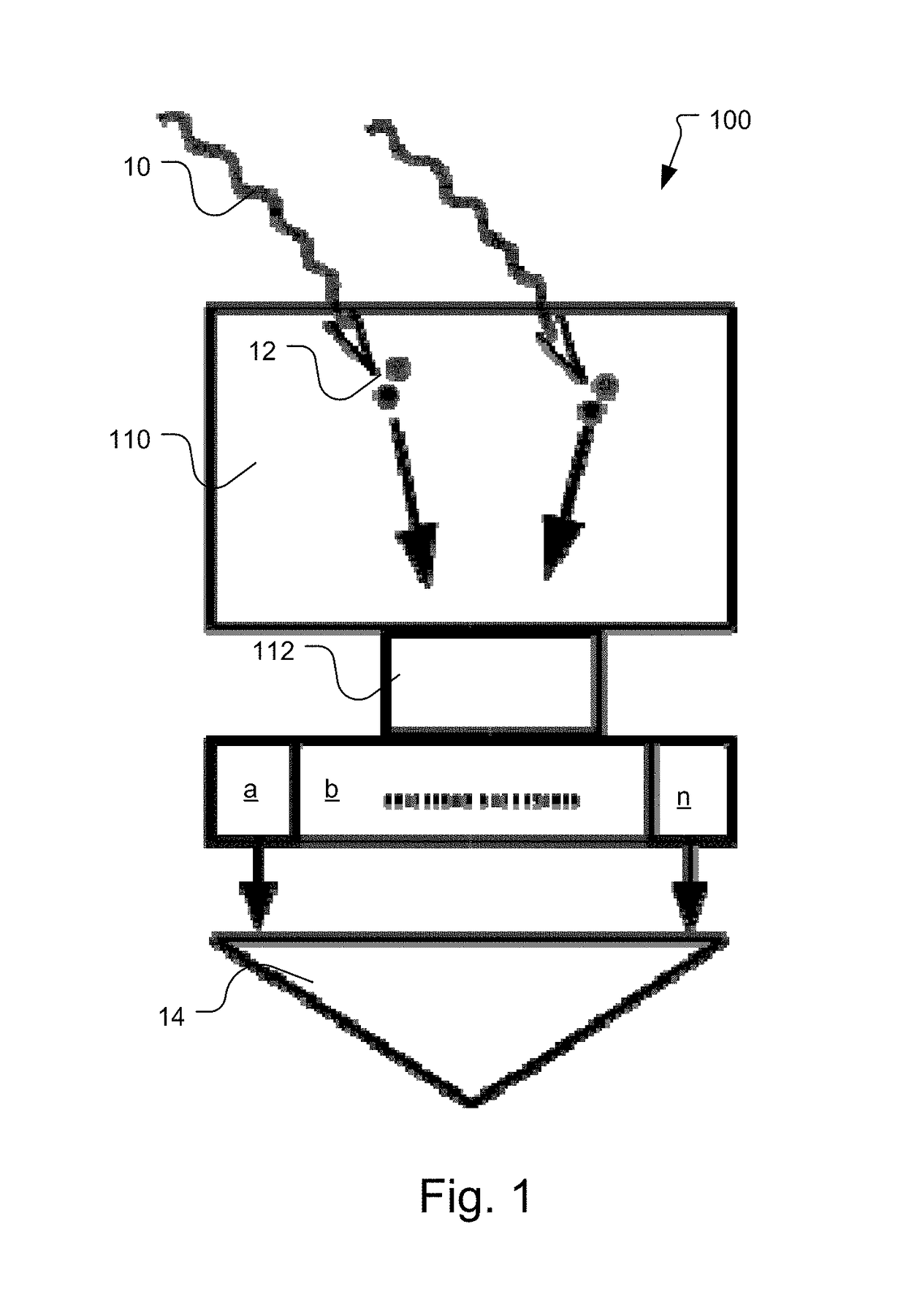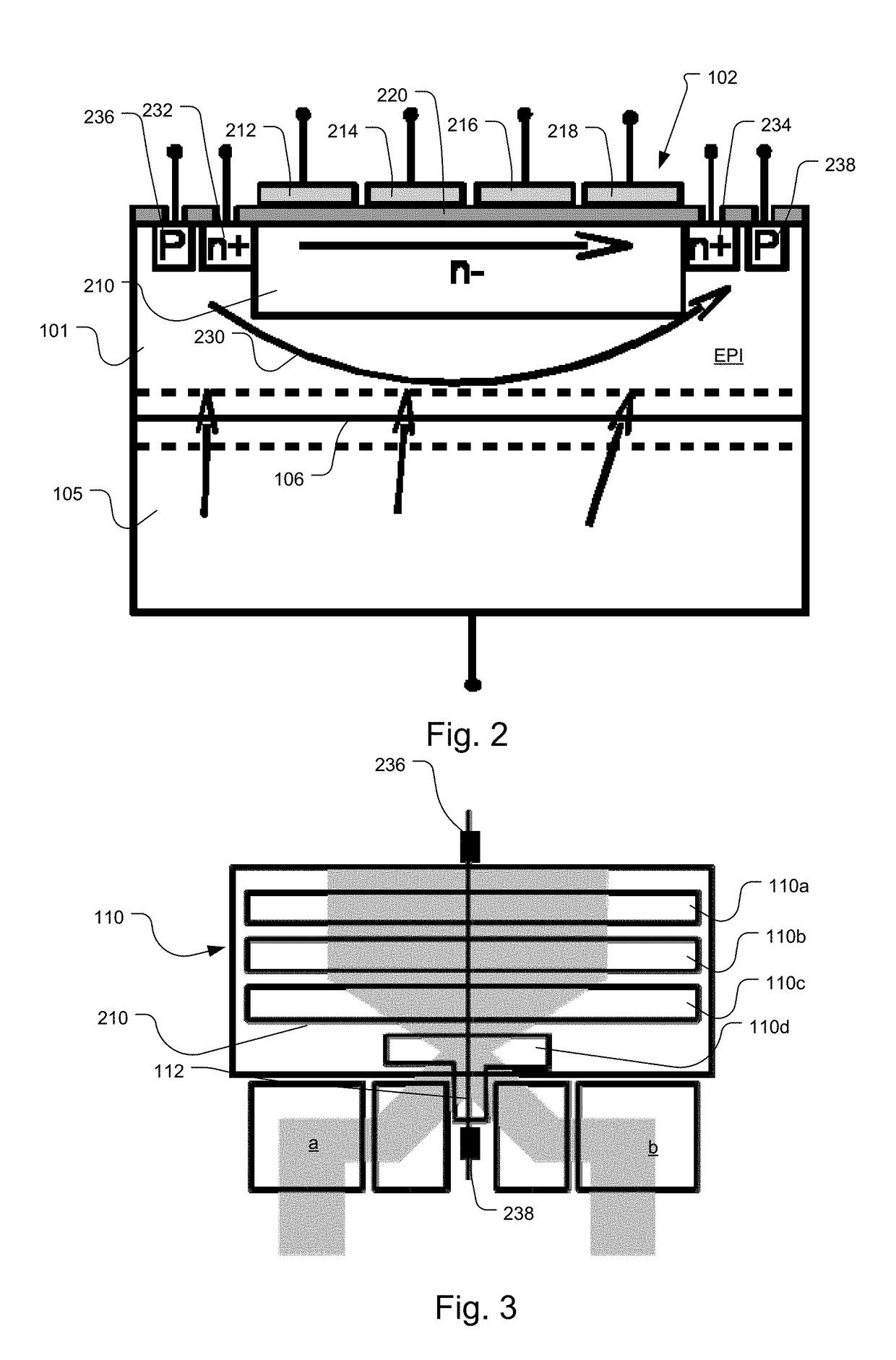Demodulation pixel incorporating majority carrier current, buried channel and high-low junction
a carrier current and pixel technology, applied in the direction of solid-state devices, basic electric elements, electric devices, etc., can solve the problems of increasing the power consumption of the sensor, affecting the thermal heating of the sensor, and the noise of dark current, so as to and enhance the charge transport and photo-sensitivity
- Summary
- Abstract
- Description
- Claims
- Application Information
AI Technical Summary
Benefits of technology
Problems solved by technology
Method used
Image
Examples
Embodiment Construction
[0030]The following description is based on the semiconductor materials with a p-type silicon substrate such that the electrons rather than holes are collected for processing. It is also possible to use n-doped silicon so that all doping and voltage relationships are swapped accordingly. Thus, the description herein is not to be understood as a limitation for using just p-doped semiconductor substrates. The same is meant for the photo-currents, which can either be electron or hole current depending on the type of doping of the semiconductor material.
[0031]FIG. 1 is a schematic diagram of a demodulation pixel 100. Photons 10 impinge onto the sensitive area 110 and create electron-hole pairs 12. In general the holes are drained by the substrate and the electrons are used as the charge carriers for the signal processing and extraction of the information. The sensitive region 110 transports the electrons as fast as possible to the demodulation region 112 in order to support high (de)mod...
PUM
 Login to View More
Login to View More Abstract
Description
Claims
Application Information
 Login to View More
Login to View More - R&D
- Intellectual Property
- Life Sciences
- Materials
- Tech Scout
- Unparalleled Data Quality
- Higher Quality Content
- 60% Fewer Hallucinations
Browse by: Latest US Patents, China's latest patents, Technical Efficacy Thesaurus, Application Domain, Technology Topic, Popular Technical Reports.
© 2025 PatSnap. All rights reserved.Legal|Privacy policy|Modern Slavery Act Transparency Statement|Sitemap|About US| Contact US: help@patsnap.com



